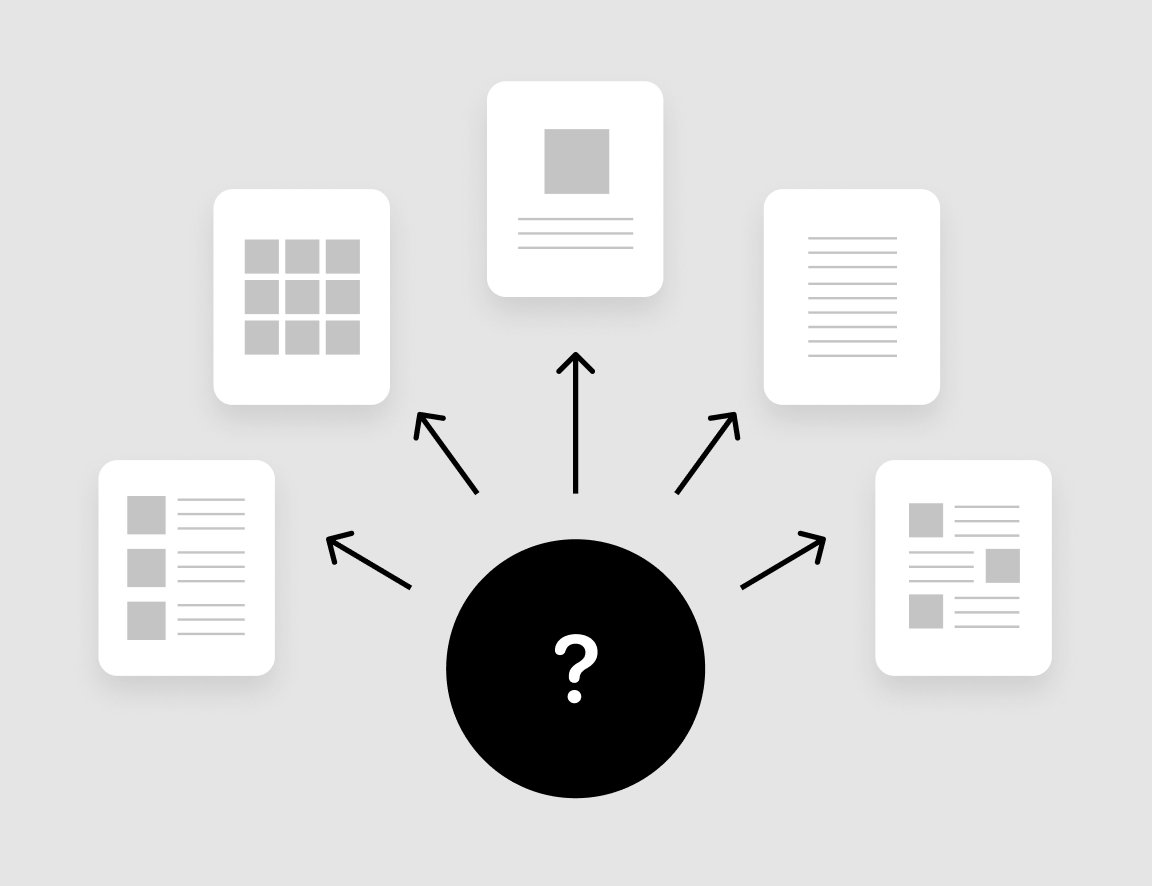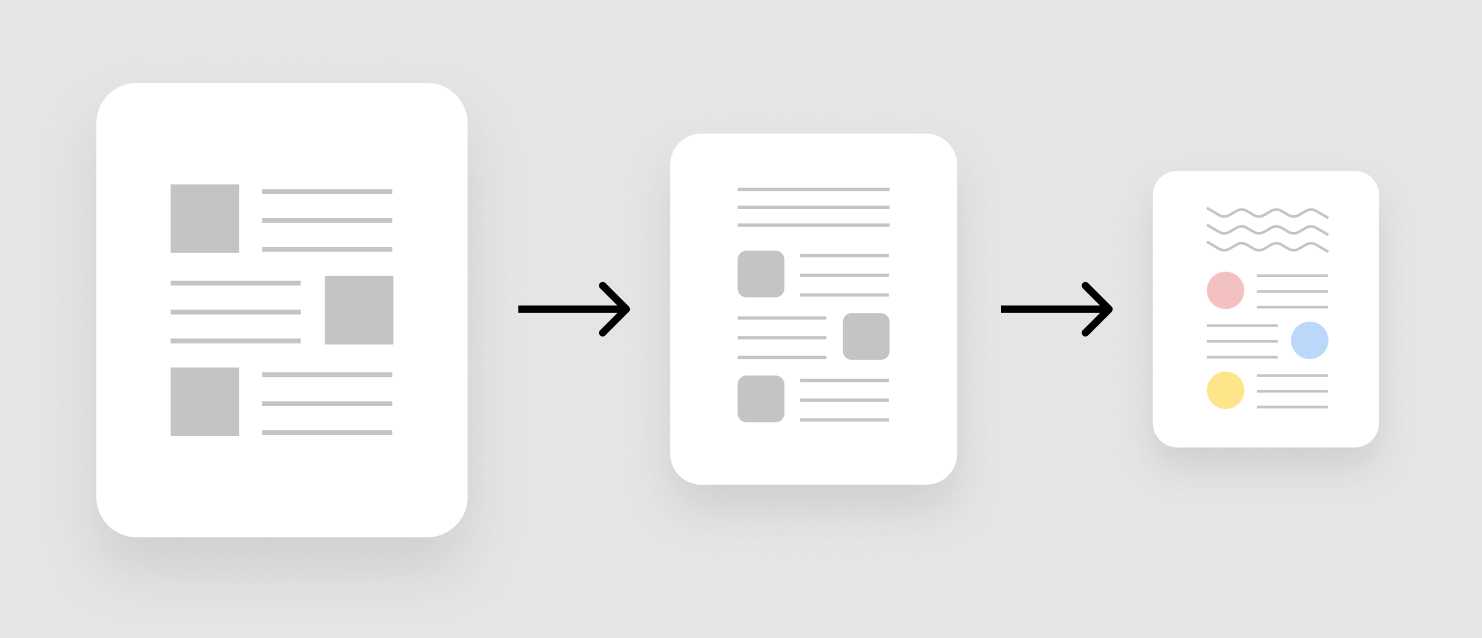Expansive and reductive modes of creative thinking
How to be mindful of your mind and avoid getting off track in your design process.
February 12, 2022
How to be mindful of your mind and avoid getting off track in your design process.
February 12, 2022
When you’re working on a creative problem, there are two major mental modes you might find yourself working in without consciously realizing it.


Occasionally a project is straightforward, and these modes happen naturally in a linear progression from expansion to reduction. But usually, projects are messy, and you end up vacillating back and forth.
When this happens, it’s critical to be aware of when you’re changing modes, and to make sure you have a good reason—because this is what can derail a project.
As an example, let’s say you’re working on a new app. After considering several different information architectures, you’ve decided to organize the screens into tabs. You start building out each tab, until you run into a problem: there are more screens than you expected, and they won’t all fit into the tab space.
At this point you might start questioning whether tabs were the right choice after all. Maybe a menu would be better? That sounds interesting, so you spend a day on new mockups exploring menu designs.
Well, a menu might be fine too, but now you’ve just blown extra time relitigating a core decision that you already made earlier, which likely has other cascading effects. This is the sort of change that can blow up a 2 week project into a 2 month project.
The reason? You jumped from reductive mode back to expansive mode. This should only happen if new information has totally invalidated your prior decisions and forced you to start over.
In this case, were the tabs really out the window? Maybe it’s OK to have a limited number of tabs. That means we’d need to prioritize the most important screens, and then figure out secondary navigation for everything else.
Regardless of which direction you ultimately choose, the key is being disciplined and conscientious about mode switching. If you feel strongly that you made a bad call, of course revisit it and go back into expansion mode. There’s no need to double down on a bad design. But you must be willing to accept the extra time investment it’ll cost you to get sidetracked.
Mind your mind modes and you’ll be more intentional about the choices you make, which also improves your efficiency in the long term.
Want to get new posts by email?
Subscribe to my newsletter: